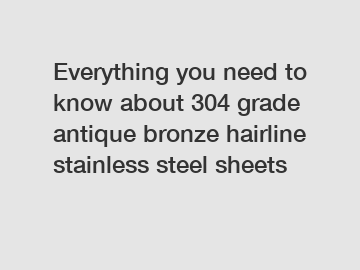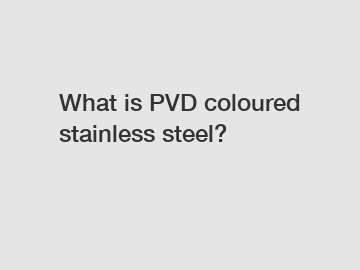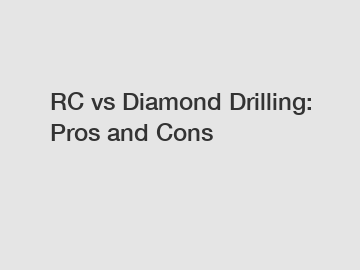How to Polish Stone Surfaces
How to Polish Stone Surfaces
Polishing Stone
View Details
It is true that not every stone countertop has a polished finish. There are a number of finishes that stone (natural stone in particular) can have. In fact, using the proper equipment, you can create all sorts of finishes on natural stone surfaces. Various articles have been written about the various stone finishes. And they have been written about the different methods used like cut finishes and treatment finishes. One of the treatment finishes is the polished finish. It is this type of finish that we will focus on in this article. Let's take a look at how to polish stone surfaces.
One reason that many owners of stone surfaces choose a polished finish is because they prefer the look of a polished surface. The shiny appearance has an appeal that conveys a sense of cleanliness and newness that draws people in. Yet, the look and feel of a polished stone surface is only one reason to choose a polished stone finish.
Another common reason for choosing a polished surface is that it adds to the durability of the stone. In what way does polishing a stone's surface contribute to its durability? The main way a polished stone is protected is it is less porous than other finish types.
Polishing a stone reduces the stone's ability to absorb liquids in one way or another. There are a number of methods used to polish a stone surface. But each of them achieve one specific goal; they reduce the absorption of the stone. Depending on the type of stone and the liquid, this can make a huge difference in stain prevention. Since polishing stone surfaces can be accomplished in a variety of ways, let's look at some of the methods used for polishing them.
As previously mentioned, stone polishing is carried out in a variety of ways using a collection of methods. Each of the methods for polishing stone surfaces happens at a different time and for a different purpose. Throughout a countertop's lifespan for example, it may be polished multiple ways. Additionally, the various polishing methods will likely take place at different stages of the surface's life. We will consider three of them.
The first time a natural stone surface is usually polished is in a fabrication facility of some sort. When the slab is cut, it often times receives a polish to brighten up the surfaces so it can be shown. Usually fab shops have machinery that that is made to automate much of the work. These machines make use of
polishing wheels designed for working on stone edges.
When a stone countertop is being cut and shaped for a particular kitchen or business area, it gets polished again by fabricators. This might be on the edges and/or corners after the slab is cut. There are other times when stone materials like granite and marble may be polished by a fabricators as well. For example, at the install location when the installers want to touch up a countertop or other surface they have just installed.
Another point in time that stone surfaces are regularly polished is once they have been installed and used for several years. Natural stone is a durable material and will last decades with proper care and maintenance. Yet, the surface of a polished stone can become dull looking after years of normal use.
The everyday wear and tear of a kitchen counter can cause your surface to loose the luster it had when it was first installed. Thus, stone owners often restore the polish or have it renewed by either performing or hiring some to perform a restorative polish on the stone.
Whether restorative polishing is necessary is based on the number of years the stone has been used and to what degree the surface has been used. Additionally, the need for this kind of polishing is often times a matter of personal preference.
Leading Diamond Tools are exported all over the world and different industries with quality first. Our belief is to provide our customers with more and better high value-added products. Let's create a better future together.How to Polish Stone Surfaces
Why Polish Stone?
When Stone Polishing Is Done
Fabricators Polish Stone
Restorative Stone Polishing
Revolutionizing Construction Industry: Are Diamond Tools Essential?
Revolutionizing Landscaping: The Versatile Concrete Bush Hammer" How can concrete bush hammers transform landscapes?
Top 7 Diamond Drill Bits for Granite
How 9mm Hole Magnetic Diamond Tools Work
A Comprehensive Guide to PVC Pipe Fittings
Top Tips for Choosing the Perfect Pup Pipes
How Does butterfly valve Work?
Routinely Polishing Stone
Most frequently, stone is polished as part of a routine on a regular basis. Making sure that a stone has a fresh shine can be done relatively easily. This process is easy and can be regularly achieved by the stone owner. Whether it is weekly, daily, or monthly, this method of polishing stone works based on the fact that adding luster a little at a time regularly maintains the shine and polish of the surface.
Stone Polishing Techniques
Now that we have talked about the timing of stone polishing as it relates to a stone's life, we will discuss the ways that stone surfaces can be polished. These methods are performed by various persons and can happen at various times, but the method is what we want to focus on in this section of the article.
Stone Polishing Pads
As we mentioned earlier, much of a stone's polish comes from stone professionals when preparing a slab or surface for purchase and installation. One of the main ways that a stone surface is polished is through the use of polishing pads.
Using granite polishing pads and other pads to polish stone, a fabricator can progressively smooth out the surface of the material until the shiny look is achieved. Polishing pads for stone materials are a lot like sandpaper is for wood. The person polishing the stone begins with a pad that has a coarse grit. Each additional pad has a higher grit than the previous one. As the grit increases the shine improves until finally a full polish is achieved.
Polishing pads come in a variety types and are available in a number of steps. In fact, 3 Step, 5 Step, and 7 Step polishing pads are common in the stone industry. Pads are commonly sold for dry environments as well as wet only environments. Finally, polishing pads are designed to polish specific types of stone including:
- Natural Stone
- Quartz
- Light Materials
- Marble
- Dark Materials
- Engineered Stone
Most polishing done with pads will be before a stone surface arrives in the final location at the time of install. Yet, there may be times when polishing pads are used after the installation is complete.
Polishing Powder for Stone
When a restoration of stone surfaces are needed, polishing powder can be used in conjunction with polishing pads. Using a polishing powder (a.k.a. polishing compound), removes minor scratches and stains from the surface of the stone. This restores the luster of the surface and reduces the dull appearance that can result from years of normal wear and tear that comes from day-to-day use.
Using a stone polishing compound to revitalize the shine of your polished stone surface can be done by the stone owner or by a professional. In either case, specific tools for restoring stone will be needed. Because of this, owners often decide to hire a professional to do the work of restoring natural stone.
Fortified Stone Polish
Tools and powders work well for the types of polishing that they are made to perform. Yet, another easy way to polish stone surfaces is to make use of a fortified stone polish that is designed to maintain the polish. This kind of polish is applied by means of a sprayer. Aerosol and pump sprayers are among the applicators. Tenax distributors provide a range of stone maintenance products. By following a stone maintenance routine, less restorative polishing may be needed.
As we have seen, there are a number of ways to polish a stone surface. And we have looked at the benefits of a polished stone countertop. Whether it is using equipment, a powder or liquid, or pads with a polishing substance, the shine you get get from a polished surface is just one of the benefits.
Polishing Stone - ATiR
Our Polishing Stone, made of aluminum oxide crystals, is used to seal the free edge of the nail after filing, and is perfect for smoothing rough or jagged edges in-between manicures instead of an emery board. If the free edge is not properly sealed, moisture will seep in between the layers of the nail causing them to separate and peel. This marvelous little tool will last a lifetime, but will break if dropped on a hard surface.
For more stone polishing toolsinformation, please contact us. We will provide professional answers.
How Does install solar panels Work?
10 Creative Ways to Use Pup Piece Spools
How Does copper tube bending Work?
Types of Pipe Fittings and Where They Are Used
Top quality pvc 4 way cross pipe fitting for water supply
Revolutionizing Industrial Automation: Frac Ball Screw Gate Valves, Are They the Future of Manufacturing?
Why is Choke & Kill Manifold Important?
89
0
0
Related Articles










Comments
All Comments (0)